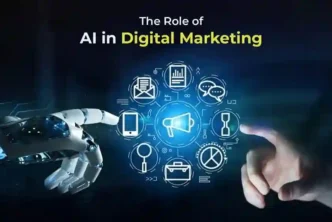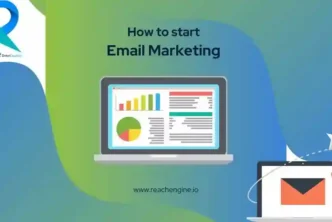In the ever-evolving landscape of digital marketing, influencer marketing has emerged as one of the most effective strategies for brands to connect with their target audience. With the rise of social media and the increasing importance of authentic content, influencers have become trusted voices that can shape consumer behavior. In 2024, influencer marketing is more powerful than ever, driven by advancements in technology, changing consumer preferences, and the growing influence of platforms like TikTok, Instagram, and YouTube.
This article delves into the power of influencer marketing in 2024, exploring its evolution, strategies, benefits, challenges, and future trends.
The Evolution of Influencer Marketing
From Celebrities to Everyday Influencers
In its early days, influencer marketing revolved around celebrities endorsing products. Brands relied on the star power of actors, athletes, and musicians to promote their goods. However, as social media platforms gained prominence, the landscape shifted. Everyday individuals with niche audiences and authentic voices began to emerge as influencers.
Today, influencers are categorized into different tiers based on their following and reach:
- Mega-influencers: Celebrities with millions of followers.
- Macro-influencers: Individuals with 100,000–1 million followers.
- Micro-influencers: Accounts with 10,000–100,000 followers, often known for niche expertise.
- Nano-influencers: Those with under 10,000 followers, offering hyper-local and highly engaged audiences.
The Role of Social Media Platforms
Platforms like Instagram, TikTok, YouTube, and Snapchat have played a pivotal role in the rise of influencer marketing. Each platform offers unique features and tools that allow influencers to connect with their audiences, from short-form videos to live streams and interactive stories. In 2024, TikTok continues to dominate with its algorithm-driven content discovery, while Instagram leverages features like Reels and shopping integration.
Why Influencer Marketing Works
Authenticity and Trust
Unlike traditional advertising, influencer marketing thrives on authenticity. Influencers build trust with their followers by sharing personal stories, honest opinions, and relatable experiences. This connection makes their recommendations more credible than direct brand advertisements.
Niche Targeting
Influencers often cater to specific niches, whether it’s fitness, beauty, technology, or gaming. Brands can leverage these focused audiences to ensure their message reaches the right demographic, resulting in higher conversion rates.
Higher Engagement Rates
Studies show that content created by influencers often garners higher engagement rates compared to brand-generated content. Influencers know how to craft content that resonates with their followers, making their posts more likely to be liked, shared, and commented on.
Strategies for Successful Influencer Marketing in 2024
Define Clear Goals and KPIs
Before launching an influencer campaign, brands need to define their objectives. Are they looking to increase brand awareness, drive website traffic, or boost sales? Setting clear key performance indicators (KPIs) ensures that the campaign is focused and measurable.
Choose the Right Influencers
Selecting the right influencers is critical to the success of a campaign. Brands should consider factors such as:
- Relevance: Does the influencer align with the brand’s values and target audience?
- Engagement rate: Are the influencer’s followers actively engaging with their content?
- Authenticity: Does the influencer genuinely use or believe in the product?
Leverage User-Generated Content
In 2024, user-generated content (UGC) remains a key component of influencer marketing. Encouraging influencers to create authentic, relatable content using the brand’s products can amplify the campaign’s reach and credibility.
Utilize Long-Term Partnerships
While one-off campaigns can be effective, long-term collaborations often yield better results. Consistent partnerships allow influencers to build stronger connections with the brand, making their endorsements appear more genuine.
Integrate AI and Data Analytics
AI and data analytics play a crucial role in influencer marketing in 2024. Brands can use AI-powered tools to identify the right influencers, predict campaign outcomes, and analyze performance metrics. These insights help optimize strategies and improve ROI.
Benefits of Influencer Marketing in 2024
Increased Brand Awareness
Influencers have the ability to introduce brands to new audiences. A single post or video from a popular influencer can expose a brand to millions of potential customers.
Improved Conversion Rates
Influencers drive action. Whether it’s clicking on a link, making a purchase, or signing up for a service, influencer recommendations often lead to higher conversion rates compared to traditional advertising methods.
Cost-Effective Marketing
Compared to TV commercials or print ads, influencer marketing offers a more cost-effective way to reach a large audience. Nano and micro-influencers, in particular, deliver high engagement at a fraction of the cost of working with mega-influencers.
Enhanced Credibility
Collaborating with a respected influencer can enhance a brand’s credibility. Consumers are more likely to trust a product recommendation from someone they follow and admire.
Challenges of Influencer Marketing
Rising Costs
As influencer marketing grows in popularity, the cost of working with influencers has also increased. Mega-influencers and top-tier creators often charge significant fees, making it challenging for smaller brands to afford their services.
Identifying Genuine Influencers
The industry faces issues like fake followers and engagement manipulation. Brands must carefully vet influencers to ensure they have a genuine following and authentic engagement.
Compliance and Transparency
Regulatory bodies like the Federal Trade Commission (FTC) require influencers to disclose sponsored content. Ensuring compliance with these guidelines is crucial to maintaining transparency and trust.
Emerging Trends in Influencer Marketing
The Rise of AI Influencers
In 2024, AI-generated influencers, such as virtual avatars and digital personalities, are becoming increasingly popular. These AI influencers offer brands a unique, customizable way to reach audiences while eliminating the risks associated with human influencers.
Live Shopping and Shoppable Content
Live shopping events hosted by influencers are revolutionizing e-commerce. Platforms like Instagram and TikTok allow users to purchase products directly during live streams, creating a seamless shopping experience.
Sustainability and Ethical Influencing
Consumers in 2024 are more conscious about sustainability and ethical practices. Brands are collaborating with influencers who share these values, promoting eco-friendly products and responsible consumption.
The Growth of B2B Influencer Marketing
While influencer marketing has traditionally focused on B2C brands, 2024 sees a surge in B2B influencer marketing. Industry experts, thought leaders, and niche professionals are becoming key players in promoting business solutions and services.
Measuring the Impact of Influencer Marketing
Engagement Metrics
Brands can measure the success of influencer campaigns through metrics like likes, comments, shares, and saves. These indicators reflect how well the content resonates with the audience.
Conversion Tracking
Tracking sales, website visits, or app downloads directly linked to influencer campaigns helps determine ROI. Tools like affiliate links, promo codes, and UTM parameters are essential for accurate measurement.
Brand Sentiment Analysis
Analyzing comments and mentions can provide insights into how the campaign has impacted brand perception. Positive sentiment indicates a successful campaign, while negative feedback highlights areas for improvement.
The Future of Influencer Marketing
As we move further into 2024, influencer marketing continues to evolve. Advances in technology, changing consumer behaviors, and the growing importance of authenticity will shape its future. Brands that adapt to these changes and embrace innovative strategies will stay ahead in the competitive landscape.
Conclusion
The power of influencer marketing in 2024 is undeniable. It has transformed how brands connect with their audiences, offering authenticity, engagement, and measurable results. By leveraging the right influencers, adopting innovative strategies, and staying attuned to emerging trends, businesses can harness the full potential of influencer marketing to drive growth and success. As the industry evolves, one thing remains clear: the influence of influencers is here to stay.




